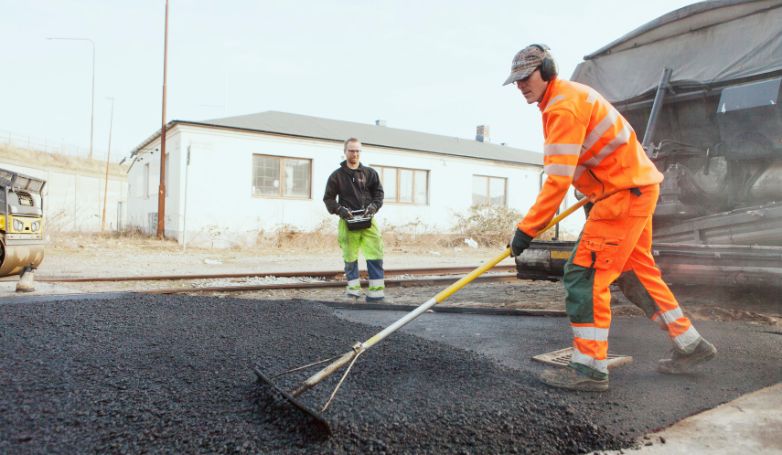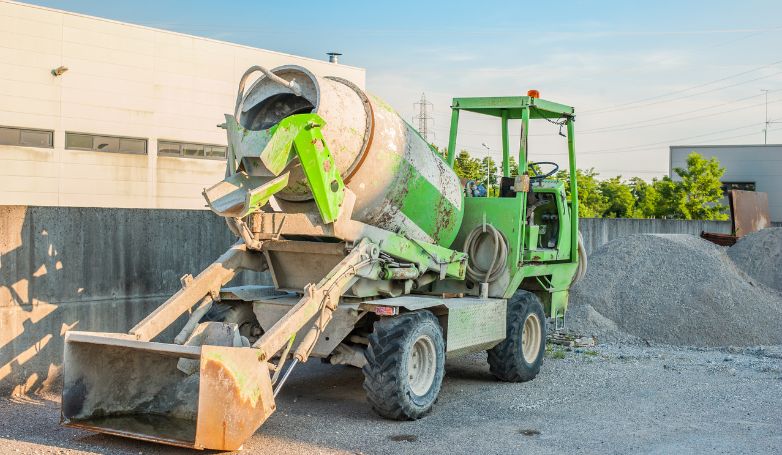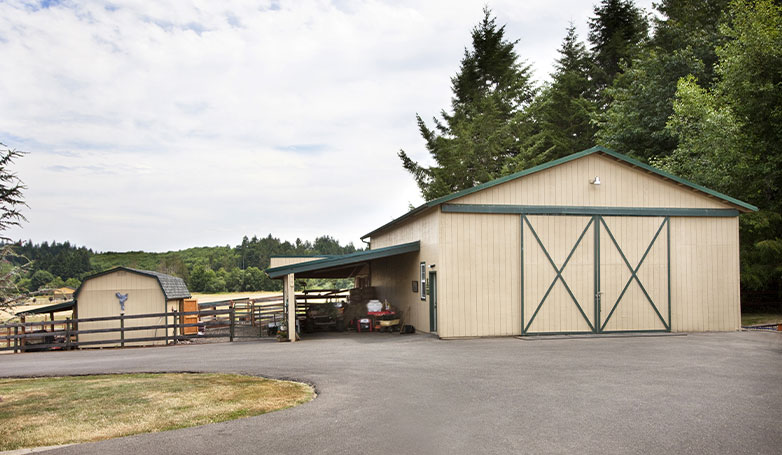Asphalt vs Concrete Roads – 5 Factors to Consider
The selection between asphalt and concrete for city roadways sparks a crucial discussion among urban planners. Each option has distinctive attributes that affect not only the initial construction but also the ongoing upkeep and environmental footprint. What are the key differences between these materials, and what factors are considered in choosing one over the other for urban streets?
In the comparison of asphalt vs concrete roads, each material offers distinct advantages. Asphalt is often chosen for its cost-efficiency and quick laying process, making it ideal for areas with changing temperatures. Concrete, while more costly upfront, boasts superior durability and requires less upkeep over time, which may lead to cost savings in the long run. The decision between asphalt and concrete roads hinges on several critical factors, including environmental conditions, traffic intensity, and budgetary considerations.
To get a more comprehensive understanding, keep reading. We’ll compare and contrast the advantages and disadvantages of each paving material, their environmental considerations, and the key elements influencing urban road planning.
Asphalt vs Concrete Roads – How They Are Made

Asphalt is a manufactured aggregate comprised of a smooth blend of bituminous oil, sand, and gravel. When roads are built using asphalt construction, hot asphalt is poured onto a heavier aggregate bed of gravel and pressed into it with a steamroller.
Once the asphalt cools, it is strong enough to withstand automobile traffic. Asphalt is smooth, and black, and does not absorb water. While asphalt is tough and durable, it offers enough flexibility to adjust to imperfect underlying surfaces.
When choosing asphalt or concrete for your project, consider the following:
- The initial cost of building asphalt vs concrete road
- Long term durability and maintenance costs
- How climate affects which road type you need
- Impact of traffic type and quantity
- Environmental impact
Choosing Asphalt
The National Asphalt Pavement Association cites three key reasons to choose Asphalt for your road-paving project:
- Asphalt is the most popular road surfacing material in the USA, as 94% of roads in the U.S. are asphalt.
- Asphalt paving construction can be completed quickly. Traffic delays for both commuters and long-haul truckers will be minimized. You’ll be able to drive across your new asphalt surface in three to four days. Concrete, on the other hand, must cure for seven days after it’s poured before it can bear the weight of vehicles.
- Asphalt holds up better under harsh weather conditions and provides a smoother ride. Concrete can be eroded by salt during winter and has a brushed or tined surface, which is not smooth and can create a noisier ride.
Choosing Concrete
Concrete consists of binding material called cement, composed of lime, silica, alumina, and gypsum, which are mixed with sand, aggregate and water.
As the mixture dries (cures), it forms a stiff, unforgiving solid surface. The natural color of concrete is grey, but adding colors provides almost any desired shade.
The Portland Cement Association boasts three facts that should cause you to choose Concrete for your road-paving project:
- Concrete holds up better than asphalt under heavy traffic and heavy truck volumes and is easier to see at night due to it’s lighter color.
- Concrete pavement requires little to no maintenance throughout its life.
- Unlike asphalt, it does not need repeated resurfacing, patching, or spot repairs.
5 Key Factors to Consider in the Asphalt vs. Concrete Comparison
When deciding between asphalt and concrete for your pavement needs, various factors come into play. Here are five key considerations in the asphalt vs. concrete comparison to help you make an informed decision:
1. The initial cost of building
Comparing road construction materials, asphalt stands out for its cost-effectiveness, up to 50% cheaper than concrete. Meanwhile, concrete, though pricier initially, offers enduring durability and lower maintenance costs.
Asphalt

Asphalt is often lauded for its cost-effectiveness, especially when compared to other paving materials. On average, asphalt paving can be up to 50 percent less expensive than concrete, presenting a more budget-friendly option. The price per square foot for asphalt typically ranges from $4 to $6, depending on factors such as regional pricing variations, the complexity of the job, and the quality of materials used. This affordability, coupled with its durability and ease of repair, makes asphalt an attractive choice for those seeking value for their investment.
Concrete
In contrast, concrete is generally the pricier option in the realm of roadway materials. It can cost between 2 to 3 times as much as asphalt and is approximately 6 times more expensive than gravel options. The cost for concrete paving falls in the range of $5 to $10 per square foot. This higher initial investment reflects concrete’s long-term durability, minimal maintenance requirements, and its ability to withstand heavier traffic and environmental conditions. While the upfront cost is significant, the long lifespan and reduced frequency of repairs can make concrete a cost-effective solution in the long run for high-traffic or heavy-duty applications.
2. Long-term Durability and Maintenance costs

Evaluating the life-cycle costs of paving materials is crucial, as it encompasses both the durability of the material and the ongoing maintenance expenses.
Asphalt
In the discussion of asphalt vs concrete roads, asphalt is renowned for its weather-resistant properties and durability. Roads paved with asphalt offer a smooth surface, enhancing tire contact and improving skid resistance, crucial for driver safety. Despite its resilience, asphalt typically incurs higher annual maintenance costs compared to concrete. This is due to the need for periodic application of top-layer sealants, especially in harsh climatic conditions, which may require reapplication every three to five years.
However, the maintenance and repair process for asphalt roads is relatively straightforward. Instead of complete reconstruction, only the top layer is usually removed and replaced, significantly reducing repair time and costs. Additionally, asphalt is environmentally friendly in this aspect, as the removed material can often be recycled. On average, an asphalt road has a lifespan of 20 to 30 years, but this can vary based on traffic loads and maintenance practices.
Concrete
Concrete stands out for its extended lifespan, typically lasting two to four times longer than asphalt when properly installed. It is significantly more resistant to common road surface issues like rutting, cracking, and potholes that frequently affect asphalt surfaces. This robustness leads to less frequent maintenance, thereby lowering long-term ownership costs.
However, concrete is not without its challenges. It is particularly susceptible to cracking under extreme pressure, and repairs can be costly and extensive. Unlike asphalt, damaged concrete often requires the replacement of entire slabs, not just surface repairs. This can lead to higher costs and longer repair times when damage does occur.
Recent Survey
According to a recent survey by the Portland Cement Association (PCA), concrete pavements typically last about 29.4 years before needing significant rehabilitation, whereas asphalt pavements often require significant rehabilitation after just 13.8 years. Over the long term, the average asphalt pavement can end up costing up to three times more to maintain than concrete. With a lifespan of 30 to 40 years, concrete is a durable choice for long-term road infrastructure, though the initial investment is higher.
3. How climate affects which road type you need

Temperature changes, the impact of the sun’s heat, snow and ice, and rain, all can take a heavy toll on roadways.
Asphalt
Asphalt, known for its dark color, is particularly effective in absorbing solar heat. This characteristic helps in melting snow and ice more quickly on asphalt surfaces, making it advantageous in snowy conditions. In situations where sunlight is insufficient for melting snow or ice, the application of road salt is a viable option, as asphalt is generally resistant to chemical damage.
Moreover, the flexibility of asphalt provides better vehicle safety in snowy and icy conditions. Its less rigid surface allows for some expansion and contraction in response to climatic changes, reducing the risk of skidding. However, this material is not without its drawbacks. Prolonged exposure to moisture and UV rays can cause asphalt to soften and crack over time. The infiltration of water into these cracks exacerbates the damage, leading to distorted and unsightly road surfaces, often requiring more frequent repairs.
Concrete
Concrete, while durable, is not immune to the effects of cold weather. The expansion and contraction caused by temperature changes can lead to cracking in concrete surfaces. This issue is exacerbated in regions with frequent freeze-thaw cycles.
Another significant concern with concrete is its susceptibility to damage from road salt. The use of salt for de-icing can lead to subsurface corrosion in concrete, resulting in cracking and crumbling over time. This undermines the structural integrity and longevity of concrete roads.
Additionally, concrete surfaces can become particularly slippery when wet or icy, posing a hazard for vehicles. This reduced traction can be a significant safety concern, particularly in regions prone to frequent rain or icy conditions.
4. Impact of traffic type and quantity

Pavement wearing is a process involving deterioration by vehicle and load other. Factors influencing this type of wear are the actual traffic load or volume and the vehicle type.
Passenger cars have little effect on a pavement’s service life from a materials fatigue perspective.
A number of experiments were conducted by the American Association of State Highway and Transportation Official (AASHO) to determine how traffic contributed to the deterioration of highway pavements. According to the results of AASHO Road Test, heavily loaded trucks can do more than 10,000 times the damage done by an average passenger car.
Asphalt
Asphalt surfaces are typically constructed to handle high-volume traffic, particularly on primary highways where the average annual daily traffic load exceeds 1200 vehicles. The inherent flexibility of asphalt, due to its bridging action, allows it to withstand occasional overloads with minimal damage. This makes asphalt an adaptable solution for various traffic, soil, and material conditions.
Designed to cater to both low- and medium-traffic roadways, asphalt has demonstrated its resilience under heavy truck traffic in both urban and rural areas. However, continuous stress from heavy vehicles, such as delivery trucks, can exert significant pressure on asphalt roads. This can lead to various forms of cracking and eventually result in the formation of potholes, necessitating regular maintenance and repairs.
Concrete
In the context of asphalt vs concrete roads, for roadways experiencing high traffic counts and heavy truck volumes, concrete is often the preferred choice. Its robustness under heavy loads makes it a common material for state departments of transportation, especially on interstates. Concrete’s durability is attributed to its resistance to common road damages such as rutting and frost heaves, particularly in colder climates. It also stands up well against the constant impact of heavy loads.
A series of experiments by the American Association of State Highway and Transportation Officials (AASHO) highlighted the impact of traffic on pavement deterioration. The AASHO Road Test concluded that heavily loaded trucks can cause more than 10,000 times the damage to highways compared to an average passenger car. This finding underscores the need for durable materials like concrete in high-traffic areas, as it is less prone to the stresses caused by heavy vehicles.
5. Environmental impact

For pavements, each phase of the life-cycle, including raw materials production, construction, maintenance, use, and end-of-life, poses a unique burden on the environment.
The LEED Green Building Rating System used by many contractors is a scorecard for the design, construction, and operation of green buildings. Pavement type selection of asphalt vs concrete road can contribute directly to some LEED credits.
Asphalt
Asphalt pavements require 20 percent less energy to produce and construct than other pavements. It is a sustainable construction process. When appropriately designed and built, the road itself doesn’t wear out.
Asphalt pavements do not leach. Once they are constructed, asphalt pavements have a low environmental impact. Studies show asphalt pavements and stockpiles of reclaimed asphalt pavement don’t leach.
Asphalt is recyclable. The asphalt industry reclaims about 65 million tons of product every year and reuses or recycles about 99 percent of it.
Concrete
According to a Department of Transportation Study, concrete has a low lifetime impact on the environment due to its lower energy cost initially, better recyclability, and lower lifetime reflection of sunlight into the atmosphere.
The Construction Materials Recycling Association estimates that about 140 million tons of concrete are recycled each year in the U.S., reducing the construction projects’ environmental impact.
Concrete does not rust, rot or burn, saving energy and resources needed to replace or repair damaged buildings and infrastructure.
- While each paving material has some environmental benefits, neither is a sustainable product. Asphalt and concrete are made from materials that are drilled for or mined and have an adverse environmental impact.
- Both surfaces are impermeable, leading to water runoff and potential problems for local water treatment facilities, rivers, and streams.
- Both release Volatile Organic Compounds (VOC). Petroleum-based asphalt is a high volatile organic compound. As the product converts to asphalt, significant quantities of harmful greenhouse gases are released into the atmosphere. The cement producing process for concrete requires high levels of heat and generates significant VOC emissions.
The Pros of Concrete Roads

Concrete roads offer several advantages, making them a popular choice for various infrastructure projects. Here are some key pros of concrete roads that contribute to their widespread use.
Longer Lifespan
When it comes to concrete vs asphalt roads, concrete roads have a much longer lifespan. In fact, many concrete roads can last up to 20 to 40 years with minimal maintenance; it is around two to four times the average lifespan of asphalt roads. This is one of the many reasons people also use concrete to make catch basins, especially in areas with heavy rainfall.
Better For Highways
Our national highways are under the constant pressure of large freight trucks that travel over them every day. Concrete handles weight much better than asphalt, meaning it is less prone to rutting or dips. If you’re planning on paving roads where there will be a high volume of large trucks, concrete is the better material.
Of course, the one major downside to using concrete on long stretches of highway is that it can get expensive very fast, which is something to consider in any road-building project.
Safer For Motorists
Thanks to the longevity of concrete roads and the strength to hold more weight without dips forming, there is a smaller chance of potholes forming. Not only does this make it safer for motorists, but it also helps traffic to flow much smoother too.
Better Fuel Efficiency
According to a number of studies of concrete roads vs asphalt roads over the past decade, concrete roads can reduce CO2 emissions and increase driver fuel efficiency. It is said that drivers get anywhere from 1-7% better fuel efficiency when driving on concrete roads compared to asphalt roads. This is because concrete roads don’t fold as much under the weight of vehicles.
More Environmentally Friendly

In general, the production of concrete roads is more environmentally friendly than that of asphalt roads. Essentially, concrete uses less energy during the construction process with fewer vehicles and passes, giving the construction process a small carbon footprint.
It is also worth noting that concrete does not produce any sort of toxic runoff like asphalt does, meaning it is not a threat to local waterways. With its unique permeability, concrete allows rainwater to pass through it so that groundwater can be replenished, just as grass would allow water to pass through.
Of course, neither of these options is sustainable options, though that does not mean one isn’t better for the environment than the other.
Saving On Resources
In evaluating asphalt vs concrete roads, one of the key benefits of concrete roads is their contribution to sustainable resource use. Concrete is primarily made from cement, which is derived from limestone – a highly abundant natural resource. Limestone’s widespread availability reduces the need for importing materials, thereby lowering the environmental footprint associated with transportation. This abundance also ensures a steady supply, making concrete a reliable choice for large-scale infrastructure projects
No Oil Damage
Concrete roads offer a significant advantage in terms of maintenance and longevity due to their resistance to oil damage. Unlike asphalt, which can deteriorate and soften when exposed to oil leaks, concrete maintains its integrity even in areas prone to oil spills. This resistance to oil not only preserves the road’s structure and appearance but also reduces the frequency and cost of repairs typically necessitated by oil-induced damage on asphalt surfaces.
Better For Colder Temperatures

Concrete is a better choice for areas with colder temperatures, as it is more resistant to the freeze-thaw cycle. This also makes it a much safer choice for drivers in snowy or icy conditions.
Recyclable
Concrete’s recyclability is another compelling pro. When concrete slabs reach the end of their lifecycle, they can be crushed and repurposed as gravel for a variety of projects. This recycling process transforms old concrete into a valuable resource for projects like gravel driveways or as a base layer in new construction. This ability to repurpose used concrete not only reduces waste but also contributes to the circular economy, where materials are reused and recycled, minimizing the need for new resources.
Coloring and Stamping
One of the biggest aesthetic advantages of concrete is that it can be stamped and colored much easier than asphalt. You’ve likely been in urban settings where the concrete is colored in certain places to section off bike lanes or to promote safer crosswalks. The number of aesthetic possibilities is much greater with concrete than with asphalt.
Light Color
One of the main reasons you’ll often see concrete roadways in hot areas is that the lighter color is more reflective than asphalt. This means that it reflects the radiation from the sun instead of absorbing and storing it as asphalt does.
With a cooler surface, concrete can help surrounding buildings, meaning businesses and homes, cut back on their energy costs. It doesn’t get as hot in urban settings with concrete compared to those with asphalt, either.
Pros of Asphalt Roads

Asphalt roads come with distinct advantages that make them a popular choice for various construction projects. Here are some key pros of asphalt roads that contribute to their widespread use.
Cost-Effective
When it comes to concrete vs asphalt roads, the materials for asphalt roads cost less than they do for concrete. Plus, since the construction process moves a lot faster for asphalt roads, it requires less time and energy to build, meaning less spent on labor and machinery.
Easy To Repair
Unlike concrete, it is possible to repair asphalt in patches. If there is a small crack or dip somewhere in the road, filling it up and patching it over is quite easy.
Better Traction
There are many people who deal with dynamic driving situations, especially those who live in hilly areas or regions that have inclement weather. Compared to concrete roads, asphalt roads offer far more traction and skid resistance, making them a safer option in many ways.
Less Noise
While concrete roads can be very noisy to drive on, asphalt roads are generally quiet. This is especially true for brand-new asphalt roads.
Better Heat Absorption
Though asphalt can get really hot, the good thing is that it has excellent heat absorption for those who live in snowy areas. After a long bout of inclement weather, snow and ice will melt much faster off the road than concrete. Rainwater will also evaporate much faster on asphalt.
Recyclable
Many consider asphalt recyclable as well, as you can melt asphalt down and re-use it to surface new roads.
Asphalt vs Concrete Roads: a side-by-side Comparison
| Asphalt | Concrete | |
| Composition | Aggregate made from bituminous oil, sand, and gravel | Aggregate made from sand and crushed rock, cement, and water. |
| Initial Cost | Average cost $4 to $6 per square foot | Average cost $5 to $10 per square foot |
| Durability | Asphalt has an average service life of 20-30 years. | Concrete has an average service life of 30 to 40 years. |
| Maintenance Requirements & Costs | Asphalt roads require resurfacing every 3-5 years. | Concrete roads require Low maintenance requirements and costs. |
| Climate impact | Asphalt offers better safety against snow, ice & skidding. Extreme heat can cause asphalt to soften. | Concrete does not soften in warm climates. Extreme cold can cause cracking. |
| Environment impact | Asphalt requires 20% less energy to produce but can emit greenhouse gases. Asphalt doesn’t leach and is recyclable. | The use of industrial byproducts in concrete lowers energy usage and reduces the generation of greenhouse gases. Concrete can be 100% recycled at the end of its service life. |
Choose a full-size contractor able to do large-scale roadway construction that is reputable, has been established for some time, and offers a guarantee on their work.
- The cheapest contractor is usually not the best contractor for the job. However, the highest-priced contractor does not always mean they are the best. Be sure you get estimates from several contractors. Look at the cost of the proposed materials, and ask for testimonials.
- Contractors vary in their experience, sourcing of materials, and pricing. Beware of estimates that are significantly lower or higher than all of the rest, as that can be a sign of inexperience, low-quality materials used, poor workmanship, or price gauging.
- Don’t even think about working with a contractor that does not guarantee their work.
As with all large projects, do your homework.
Thoroughly evaluate the five factors we’ve discussed and the ultimate use for your project to consider whether to choose asphalt vs concrete roads. When considering cost, be sure to look at both the initial cost and the life-cycle cost. The paving material that offers the most advantages for your project needs is going to be your best choice.
Look for paving contractors that have been in business for a while. They should have good testimonials and reviews for projects that are similar to yours. Ask other business owners for their paving contractor referrals. Be sure to consider all the factors discussed in this article for your road-building project, and choose your contractor carefully.


